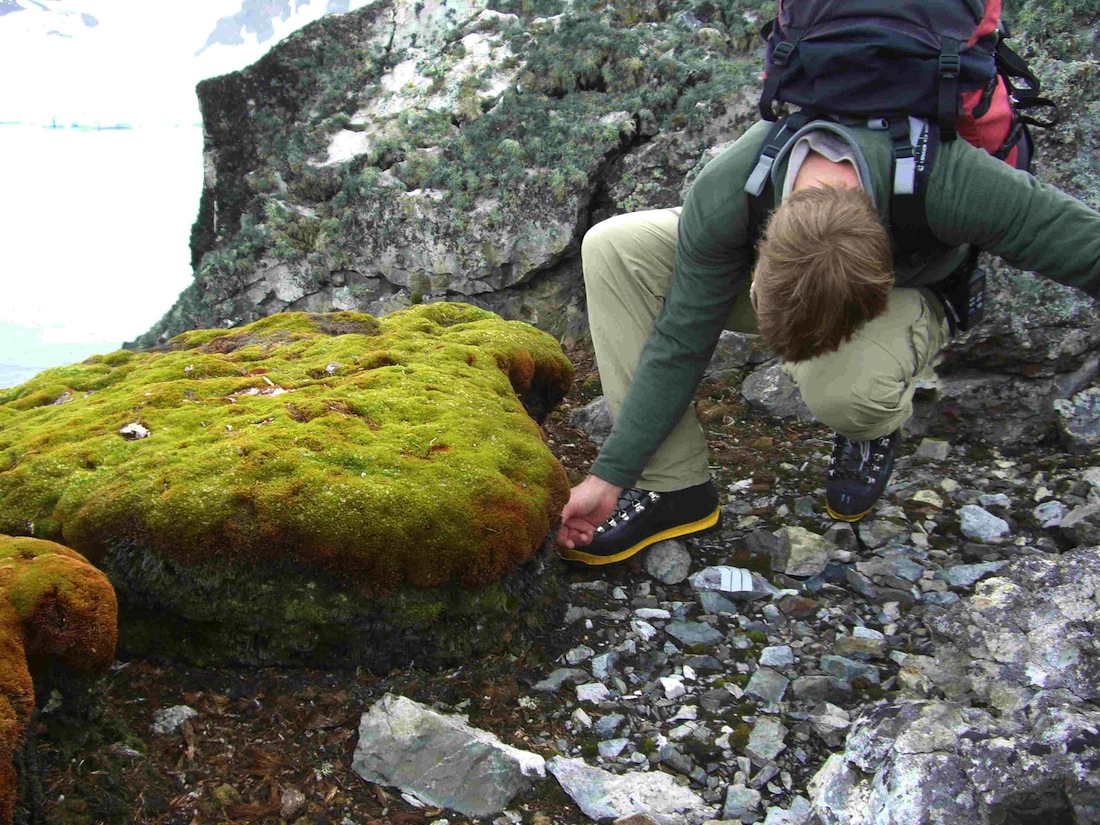Antarctic Warming Spurs Rapid Moss Growth

A rolling stone gathers no moss, but a warming Antarctic garners more of it.
The Antarctic Peninsula is one of the fastest-warming places on Earth, and the increasing temperature has had one unusual impact: Moss is growing up to four times more quickly than it did a century ago, new research shows. The number of predatory microbes inside the moss, named amoebae, has also swelled with the temperature, increasing more than sixfold since the area began to warm in the 1960s.
Moss and microbes may not be the first life-forms that come to mind when thinking of the Antarctic, but they are the dominant land-based organisms that live in the area year-round, surviving frigid temperatures, said Jessica Royles, a researcher at the British Antarctic Survey and the University of Cambridge. The study "highlights that biological systems there are sensitive to changes in climate that we know have occurred, but haven't necessarily measured in these systems," Royles told LiveScience.
The study examined the southernmost moss clump in the world, which is about 3 feet (1 meter) in diameter and 16 inches (40 centimeters) deep, Royles said. After freezing each winter in Antarctica, the moss bounces back during the brief, ice-free summer and the exterior of the clump grows outward. Beneath it, a layer a peat accumulates, as well as the shells of dead amoebae, she added. [Life on Ice: Gallery of Cold-Loving Creatures]
A slice of moss
After taking a slice of the moss clump and taking it back to the United Kingdom, the researchers dated each layer via radiocarbon dating. Radiocarbon, or carbon-14, is a naturally occurring radioactive isotope, or chemical variant of carbon with a different number of neutrons, that forms in the upper atmosphere and is absorbed by green plants. It decays at a constant rate, and measuring the abundance of carbon-14 and regular carbon in a sample allows researchers to date everything from moss to ancient documents. This technique enabled the researchers to see how much the moss has grown each year since "taking root" in the area in about 1860, Royles said.
Atmospheric bomb testing beginning in the 1960s produced a spike in carbon-14 that has slowly declined in the past 50 years. By also measuring this trend, the researchers ensured the accuracy of their calculations, Royles said.
Sign up for the Live Science daily newsletter now
Get the world’s most fascinating discoveries delivered straight to your inbox.
Warming up
Since the 1960s, the Antarctic Peninsula has warmed by an average of 1 degree Fahrenheit (0.56 degrees Celsius) each decade, according to the study. This has had a variety of effects on the peninsula, most notably the retreat of ice and glaciers, Royles said.
Although the area continues to warm, the growth rate of the moss has dropped recently. Now the plant shoots up about 0.16 inches (4 millimeters) per year. During its first 100 years of life, the moss clump grew at a slower clip of about 0.04 inches (1 mm) annually. At its peak, during a brief span in the 1970s, it put on 0.28 inches (7 mm) yearly.
Researchers don't know exactly why the growth rate has gone down since then, but it probably has to do with a decrease in rainfall levels or stronger winds, Royles said.
This moss clump is practically Lilliputian compared to moss clumps on Elephant Island, north of Antarctica, which can grow up to 10 feet (3 m) deep, covering an area of about 130 by 65 feet (40 by 20 m), Royles said.
Email Douglas Main or follow him on Twitter or Google+. Follow us @livescience, Facebook or Google+. Article originally on LiveScience.










